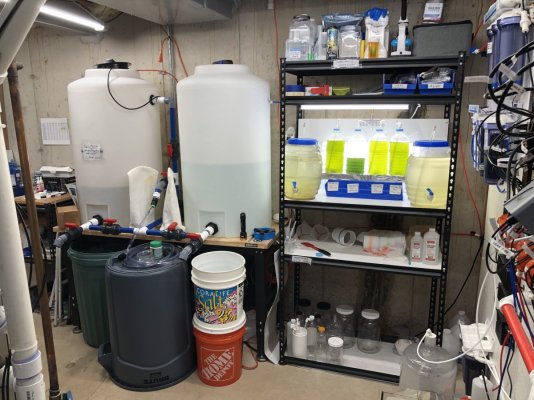Dark debris isn't normal, in my experience. I dunno what it could be. I've heard that 1-part doesn't store as well as 2-part but I've used both with similar results.I have the 1 part Guillard’s F2 and it has begun to show some dark pieces of debris in it. Is this some kind of normal precipitation or should I pitch it. I don’t think I contaminated it in any way.
I've heard alot of people have settling issues but I'm afraid I don't have much advice to offer. I have little to no settling in my cultures. I used to get crashes but follow a pretty strict protocol now so it's rare for me nowadays.No matter how strong i bubble culture, i have habbit that everyday i swirl container a bit, it helps a lot with settling.
The nanno looks good to me, the tetraselmis looks like it was just split. Generally speaking darker means more dense. But alot of things are green so just looking dark green doesn't mean high quality ime.Does it matter how GREEN a pod culture is. Is just a tint of green enough or should it look more like the Tetraselmus in the attached photo?
My usual mix is tisochrysis, tetraselmis, and nannochloropsis. I have tried others but that combo is great for most uses (I grow copepods, rotifers, and artemia). For bivalves (I'm trying flame scallops) I'd add diatoms like Thalassiosira.Sounds like since I have a multistrain culture eventually one will become dominant. Do you culture multiple strains? Is the work worth the diversity between strains?
Do you only dose f/2 right after the split or is it something you do on a more regular schedule?
It makes a difference but you can get by with a single type sometimes. I've grown rotifers on just nanno and they did quite well. Tigriopus copepods will grow on about anything, as will artemia. Other copepods didn't grow for me on a single feed type. But you could feed one type live and supplement with a preserved mix. There are other ways to go.
It was difficult for me to get multiple types started at first but once I had them it's not significantly more work having 3-4 cultures going vs. Just a single one.
I only add f/2 when splitting.
Last edited:
















